
Frontiers in Virtual Reality
Scope & Guideline
Pioneering Research in Human-Computer Interaction
Introduction
Aims and Scopes
- Interdisciplinary Applications of VR and XR:
The journal emphasizes the use of VR and XR technologies in various disciplines, including psychology, medicine, education, and urban planning, showcasing how these technologies can enhance understanding and interventions in these fields. - User Experience and Interaction Design:
A core focus is on understanding and improving user experience in VR environments, including studies on embodiment, presence, and the effects of different interaction techniques. - Therapeutic and Rehabilitation Applications:
The journal highlights research on the therapeutic uses of VR, particularly in mental health, rehabilitation, and pain management, emphasizing evidence-based practices and outcomes. - Technological Innovations and Methodologies:
It covers advancements in VR technology, including hardware developments, software applications, and innovative methodologies for evaluating VR experiences and interventions. - Social and Collaborative Aspects:
Research on social presence, collaboration in virtual spaces, and the impact of avatars and virtual agents on social interactions is a significant theme, reflecting the journal's interest in the social implications of VR.
Trending and Emerging
- Mental Health and Wellbeing Interventions:
There is a growing emphasis on using VR for mental health interventions, including therapies for PTSD, anxiety, and depression, highlighting the therapeutic potential of immersive environments. - Augmented Reality Integration:
Research exploring the integration of augmented reality (AR) with VR technologies is on the rise, indicating a shift towards mixed reality applications that enhance user experiences and interactions. - Social Virtual Reality Experiences:
Studies examining social interactions in virtual environments, including the dynamics of user presence and avatar representation, are trending as researchers explore the implications of social VR for community building and collaboration. - Real-World Applications of VR in Professional Training:
There is an increasing focus on the practical applications of VR in professional training across various sectors, including healthcare, military, and education, showcasing its potential for enhancing skill development and training outcomes. - Haptic Feedback and Multimodal Interactions:
Research on haptic feedback and other sensory modalities in VR is emerging, reflecting a trend towards creating more immersive and realistic experiences that engage multiple senses.
Declining or Waning
- Basic Sensory Perception Studies:
Research focusing solely on basic sensory perception in VR, such as depth perception and visual acuity, has decreased, possibly due to a shift towards more complex, integrative studies that consider emotional and social factors. - Traditional Gaming Applications:
There has been a noticeable decline in papers that focus exclusively on traditional gaming applications of VR, as the journal shifts towards more innovative and multidisciplinary applications, such as healthcare and education. - Hardware-Centric Research:
Studies that primarily focus on hardware specifications and comparisons have become less frequent, indicating a move towards exploring user experience and content-driven applications of VR technologies. - Single-Discipline Focus:
There is a waning interest in research that remains strictly within a single discipline, as the journal increasingly values interdisciplinary approaches that leverage VR in various contexts. - Static Virtual Environments:
The exploration of static virtual environments is declining, with a trend towards dynamic, interactive, and immersive experiences that engage users in more meaningful ways.
Similar Journals

GetMobile-Mobile Computing & Communications Review
Navigating the Evolving Landscape of Mobile ComputingGetMobile-Mobile Computing & Communications Review, published by the Association for Computing Machinery (ACM), is a leading journal dedicated to the evolving field of mobile computing and communication technologies. With an ISSN of 2375-0529 and an E-ISSN of 2375-0537, this publication serves as a vital resource for researchers, professionals, and students, providing insights into the latest advancements, trends, and challenges in mobile technology. The journal covers a comprehensive range of topics, including but not limited to mobile networks, communications protocols, mobile applications, and edge computing, making it invaluable for those in academia and industry alike. Although specific metrics such as impact factor and H-index are currently unavailable, GetMobile is recognized for fostering innovative research and promoting knowledge exchange in mobile and computational communications. As the field continues to grow, this journal remains pivotal for disseminating impactful studies and practical applications that drive the future of mobile technology.
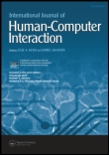
INTERNATIONAL JOURNAL OF HUMAN-COMPUTER INTERACTION
Pioneering Insights in Human-Computer DynamicsINTERNATIONAL JOURNAL OF HUMAN-COMPUTER INTERACTION, published by Taylor & Francis Inc, stands at the forefront of research within the interdisciplinary fields of human-computer interaction, human factors, and ergonomics. Since its establishment, the journal has consistently contributed to advancing the understanding of the interactions between people and computers, making it a vital resource for researchers, professionals, and students alike. With an impressive impact factor reflecting its high citation rate, this journal is recognized as a Q1 publication in both Computer Science Applications and Human Factors and Ergonomics categories for 2023, showcasing its stature within the academic community. Additionally, it boasts a commendable ranking within the top percentiles in key areas on Scopus, ensuring that the research published here reaches broad scholarly audiences. Available in traditional subscription format, the journal covers seminal studies from 1989 to 2024, reflecting ongoing innovation in technology and its applications in everyday life, and thus serves as an essential platform for pioneering research that shapes the future of user experience.
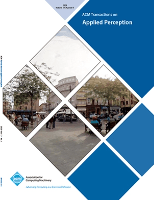
ACM Transactions on Applied Perception
Pioneering Research at the Crossroads of Psychology and ComputingACM Transactions on Applied Perception is a leading journal published by the Association for Computing Machinery, focusing on the intersection of perception science and computational methods. With an ISSN of 1544-3558 and an E-ISSN of 1544-3965, this esteemed publication has been a vital resource for innovators and researchers since its establishment in 2004. It operates within the ambit of Computer Science and the realms of Experimental and Cognitive Psychology, boasting a commendable impact factor and category rankings, including Q2 in Computer Science (miscellaneous) and Q3 in both Experimental and Cognitive Psychology and Theoretical Computer Science. The journal's scope encompasses a plethora of studies aimed at understanding human perception through computational lenses, making it an essential platform for scholarly exchange. Although it does not currently offer an Open Access option, its extensive reach and rigorous peer-review process ensure high visibility and impact in the academic community. By fostering collaboration across disciplines, ACM Transactions on Applied Perception encourages advancements that bridge perceptual research with practical applications, making it invaluable for researchers, professionals, and students engaged in this dynamic field.
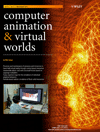
COMPUTER ANIMATION AND VIRTUAL WORLDS
Exploring the Boundaries of Imagination and Technology.COMPUTER ANIMATION AND VIRTUAL WORLDS, published by Wiley, is a pivotal journal in the fields of Computer Graphics and Computer-Aided Design, as well as Software. With a focus on the intersection of technology and creativity, the journal provides a platform for researchers and professionals to share innovative studies, new methodologies, and insights that shape the future of computer animation and virtual environments. Currently holding a Q2 category in Computer Graphics and a Q3 in Software for 2023, it ranks #63 out of 106 in its niche, highlighting its influence and relevance in the academic community. Though the journal operates under a subscription model, it also offers options for open access, ensuring that a broader audience can engage with groundbreaking research. The journal has been publishing continuously since its inception in 2004 and looks forward to further contributions as it moves towards its 20th anniversary in 2024. Whether you are a seasoned researcher, an industry professional, or a student eager to explore these dynamic fields, COMPUTER ANIMATION AND VIRTUAL WORLDS is an essential resource for advancing knowledge and innovation.

PRESENCE-Virtual and Augmented Reality
Advancing Knowledge in Virtual and Augmented RealmsPRESENCE - Virtual and Augmented Reality is a leading journal published by MIT Press, focusing on the dynamic fields of virtual and augmented reality technologies. With an ISSN of 1054-7460 and E-ISSN 1531-3263, the journal has been a crucial platform for scholarly research since its inception in 1992 and continues to shape the discourse in its field through 2024 and beyond. The journal holds a Q3 category ranking in Computer Vision and Pattern Recognition as well as Control and Systems Engineering, and a Q4 ranking in Human-Computer Interaction and Software, reflecting its diverse impact across multiple disciplines. Although it does not currently offer an open access option, the journal is accessible through institutional subscriptions, providing valuable insights into the latest advancements and practical applications in immersive technologies. By fostering high-quality research and interdisciplinary dialogue, PRESENCE serves as an essential resource for researchers, professionals, and students committed to exploring the transformative potential of virtual and augmented reality in various sectors.

Advances in Human-Computer Interaction
Unlocking the potential of human and computer synergy.Advances in Human-Computer Interaction is a premier peer-reviewed journal published by HINDAWI LTD, dedicated to the exploration of cutting-edge research and innovation in the field of Human-Computer Interaction (HCI). With an ISSN of 1687-5893 and an E-ISSN of 1687-5907, this Open Access journal has been contributing to the scientific community since 2008, offering unrestricted access to critical findings and advancements. Based in Egypt with an address at ADAM HOUSE, 3RD FLR, 1 FITZROY SQ, LONDON W1T 5HF, ENGLAND, it occupies a notable position in the academic landscape, reflected in its 2023 Scopus ranking of Rank #57/145 and a 61st percentile in the Human-Computer Interaction category. As a Q3 journal, it plays a crucial role in disseminating research that bridges the gap between humans and technology, providing valuable insights for researchers, professionals, and students pursuing expertise in this dynamic field. The journal’s converged years from 2010 to 2024 signify its ongoing commitment to advancing knowledge and fostering collaboration among HCI experts worldwide.

Multimodal Technologies and Interaction
Unlocking the Potential of Multimodal Systems.Multimodal Technologies and Interaction, published by MDPI since 2017, is an esteemed open-access journal based in Switzerland, dedicated to the exploration and advancement of innovative multimodal systems that enhance user experience across various digital platforms. With its commitment to disseminating high-quality research in diverse areas such as Computer Networks and Communications, Human-Computer Interaction, and Neuroscience, the journal has rapidly established itself within the academic community, achieving a commendable position in Scopus rankings including Q2 in both Computer Networks and Communications and Computer Science Applications. As an essential resource for researchers, professionals, and students alike, Multimodal Technologies and Interaction fosters interdisciplinary dialogue and supports the development of cutting-edge technologies, ensuring that advancements in multimodal interaction are accessible to a global audience. Scholars can benefit from its Open Access format, allowing unrestricted access to influential studies that shape the future of technology and interaction design.
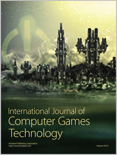
International Journal of Computer Games Technology
Transforming Ideas into Interactive ExperiencesInternational Journal of Computer Games Technology, an esteemed publication from HINDAWI LTD, serves as a pivotal platform for scholars and practitioners in the realms of computer graphics, software, and human-computer interaction. Since its inception in 2008 as an open-access journal, it has committed to disseminating cutting-edge research and innovative practices within the gaming technology sector. The journal, identified by its ISSN 1687-7047 and E-ISSN 1687-7055, is based in the United States and boasts a converged publication timeline from 2009 to 2024. Recognized in the 2023 Category Quartiles for its contributions to notable fields, it ranks Q3 in Computer Graphics and Computer-Aided Design, Q4 in Human-Computer Interaction, and Q3 in Software. With its active presence in Scopus rankings, the journal holds commendable positions in multiple categories, indicating a growing impact on the academic community. This journal not only aims to advance knowledge but also encourages collaborative exploration and innovative solutions, making it an essential resource for researchers, professionals, and students dedicated to the evolution of gaming technology.

Reti Saperi Linguaggi-Italian Journal of Cognitive Sciences
Exploring the Nexus of Language and CognitionReti Saperi Linguaggi - Italian Journal of Cognitive Sciences is a distinguished academic journal dedicated to advancing the field of cognitive sciences through interdisciplinary research that spans behavioral neuroscience, communication, linguistics, and developmental biology. Published by SOC ED IL MULINO, this journal has been an essential platform for scholars aiming to understand the intricate relationships between language, cognition, and social interaction since its inception in 2019. With an ISSN of 1826-8889 and an E-ISSN of 2279-7777, it is available in print and online formats, although it does not currently operate under an open access model. As of 2023, it holds a Q3 rating in Linguistics and Language, and Q4 ratings across other significant categories, signifying its emerging presence within the academic community. The journal's Scopus rankings reflect its dedication to high-quality research, positioned in the 57th Percentile in Arts and Humanities and 53rd in Social Sciences. Located in Bologna, Italy, Reti Saperi Linguaggi aims to promote critical discourse and facilitate collaboration among researchers, professionals, and students, making it a vital resource for anyone interested in the cognitive aspects of language and beyond.
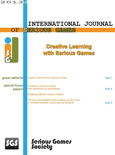
International Journal of Serious Games
Connecting Ideas and Innovations in Serious GamesThe International Journal of Serious Games is a pioneering publication dedicated to advancing the interdisciplinary field of serious games and their application in various domains such as education, artificial intelligence, and human-computer interaction. Published by SERIOUS GAMES SOC in Italy, this Open Access journal has been facilitating unrestricted access to innovative research since 2014. The journal is recognized for its quality, achieving prominent rankings in its categories, including Q2 in Education and Q2 in Computer Graphics and Computer-Aided Design as of 2023. With its commitment to academic rigor, it places itself as an essential resource for researchers, professionals, and students seeking to explore the transformative potential of serious games. Housed at the IST INT COMUNICAZIONI, VILLA PIAGGIO, GENOA, the journal continues to foster knowledge sharing and collaboration across disciplines, enriching the global discourse on gaming for impact.